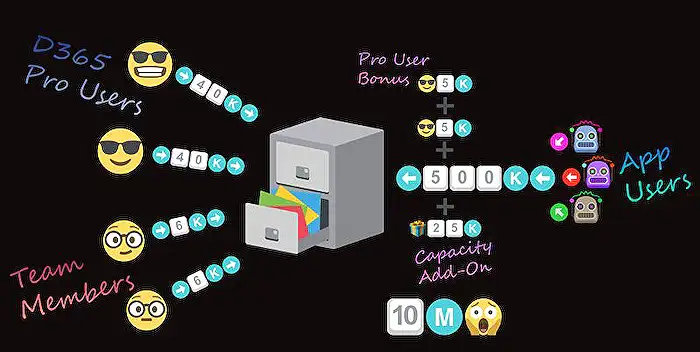
Secure Your Tokens: Essential Conditional Access Guide
Secure Your Data: Prevent Token Theft with Microsoft 365 Conditional Access Policies!
Key insights
- Understanding Token Theft: Token theft is a major cyber threat that allows hackers to bypass multi-factor authentication (MFA) and access corporate resources.
- Utilizing Microsoft 365: Conditional Access policies in Microsoft 365 are essential tools to prevent token theft by blocking token replay attacks and enforcing stringent security measures.
- Implementing Access Control: Setting up Conditional Access involves configuring advanced settings like device compliance and location-based policies.
- Adopting Best Practices: Securing your identity environment requires adhering to best practices for robust identity security and user protection.
- Continuous Security Enhancement: CloudCapsule enhances Microsoft 365 security through continuous monitoring and offers a free security assessment.
How to Better Understand and Prevent Token Theft
Token theft is a growing concern in the realm of cybersecurity, particularly as it enables attackers to circumvent multi-factor authentication—a core component of identity security strategies in modern enterprises. When attackers steal authentication tokens, they can access sensitive company resources, posing a severe threat to data security and organizational integrity. Microsoft 365 offers robust tools to counteract these threats, notably through Conditional Access policies.
Conditional Access policies provide a framework for proactive defense, allowing administrators to specify conditions under which users can access corporate resources. These policies can be tailored based on device compliance, user location, and other security-relevant contexts. Effectively implementing these policies helps block potential entry points for token theft, thereby safeguarding the business' digital environment.
To enhance security measures, continual monitoring and adapting to new threats is crucial. Tools like CloudCapsule aid in maintaining a resilient security posture by providing ongoing evaluations and improvements to Microsoft 365's security setups. By understanding the tactics of attackers and evolving defensive strategies accordingly, businesses can better protect themselves against the complexities of token theft and other cyber threats.
In the recent YouTube video by Nick Ross [MVP] from the channel T-Minus365, viewers are guided through the escalating issue of token theft, a concern that poses significant risks to corporate security. Token theft enables attackers to circumvent multi-factor authentication, providing an unauthorized pathway to sensitive corporate resources. Emphasizing the gravity of this threat, Ross systematically explains the mechanics behind token theft and its impact on security protocols.
Title: Understanding Token Theft and Its Prevention
Overview of Token Theft
Token theft is alarmingly becoming a common tactic among cybercriminals, serving as a method to bypass the strong layers of security provided by multi-factor authentication systems. The video begins by defining token theft and illustrating how it can silently undermine the security measures that businesses rely on to protect their digital environments. This introduction sets the stage for deeper discussions on mitigational strategies to counter this type of cyber threat.
Implementing Conditional Access Policies
To combat the risks associated with token theft, Ross discusses the strategic configuration of Conditional Access policies within Microsoft 365 to safeguard against potential breaches. He highlights how these policies can effectively block token replay attacks—an exploit where a valid data transmission is maliciously repeated or delayed. By using Conditional Access, organizations can add an extra layer of security that adapts to the evolving tactics of cyber attackers.
Enhancing Security with Advanced Settings
Further into the video, Ross explores advanced settings that can fortify a business’s defense mechanisms. These include device compliance measures and location-based policies that ensure secure access is conditioned not only by user identity but also by device health and geographic location. Such granular controls are crucial in creating a robust security framework that can preemptively neutralize potential security breaches before they materialize.
Best Practices and Proactive Measures
Besides the technical configurations, Ross advises viewers on best practices for maintaining a secure identity environment. By protecting users and business data proactively, organizations can significantly reduce the chances of token theft and similar cyber attacks. This segment underscores the importance of continuous security monitoring and adjustment, which plays a vital role in staying ahead of cyber threats.
The video also mentions CloudCapsule’s role in enhancing the security measures of Microsoft 365 through continuous monitoring, although details about a free assessment were not disclosed following the guidelines. As Ross wraps up, he reiterates the importance of staying vigilant and proactive in protecting organizational resources against cyber threats.
Further Insights on Token Theft and Cybersecurity Practices
Token theft is not only a direct threat to organizational security but also a wake-up call to businesses underestimating the sophistication of modern cyberattacks. As industries increasingly depend on digital platforms, the implications of such security breaches can be vast, affecting everything from data integrity to business reputability. Conditional Access policies, as suggested by Nick Ross, offer a strategic response tailored to safeguard sensitive corporate environments. Ensuring these policies are in place, along with a keen focus on advanced security settings, represents a concerted effort to mitigate emerging cyber threats effectively. Businesses must adopt a proactive security stance, integrating comprehensive monitoring tools and embracing industry best practices to secure their digital identities and assets against the evolving landscape of cyber threats.

People also ask
## Questions and Answers about Microsoft 365"How is token theft protected?"
Answer:"How to protect access tokens?"
Answer: "Token Best Practices""Can an access token be stolen?"
Answer:"How does token theft happen?"
Answer:
Keywords
token theft protection, conditional access security, prevent token theft, secure digital tokens, conditional access strategies, cybersecurity token safety, authentication token protection, manage access tokens